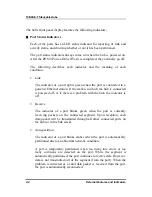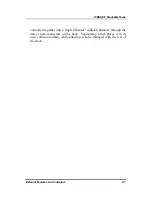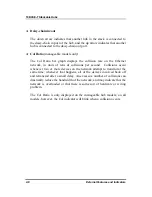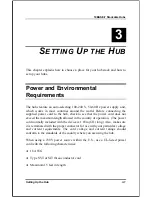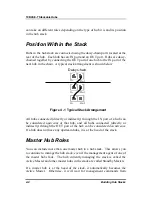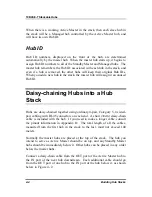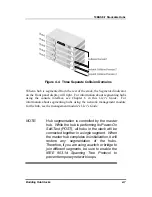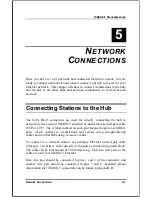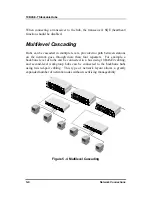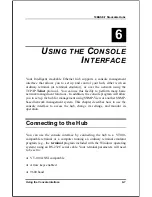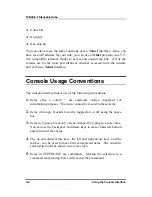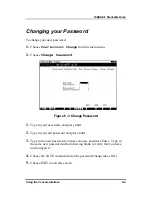
10BASE-T Stackable Hubs
When there is a working Active Master in the stack, then each slave hub in
the stack will be a Managed hub controlled by the Active Master hub, and
will have its own Hub ID.
Hub ID
Hub ID numbers, displayed on the front of the hub, are determined
automatically by the master hub. When the master hub starts up, it begins to
assign Hub ID numbers to all of the Standby Master and Managed hubs. The
master hub remembers the Hub ID associated with each hub in the stack, and
even if a hub is removed, the other hubs will keep their original Hub IDs.
When you add a new hub to the stack, the master hub will assign it an unused
Hub ID.
Daisy-chaining Hubs into a Hub
Stack
Hubs are daisy-chained together using ordinary 4-pair, Category 5, twisted-
pair cabling with RJ-45 connectors on each end. A short (30cm) daisy-chain
cable is included with the hub. If you need to make a longer cable, consult
the pinout information in Appendix D. The total length of all the cables,
measured from the first hub in the stack to the last, must not exceed 100
meters.
Normally the master hubs are placed at the top of the stack. The hub you
intend to serve as Active Master should be on top, and any Standby Master
hubs should be immediately below it. Other hubs can be placed in any order
below the master hubs.
Connect a daisy-chain cable from the OUT port of the Active Master hub to
the IN port of the next hub downstream. Each additional cable should go
from the OUT port of one hub to the IN port of the hub below it, as shown
below in Figure 4 -2.
4-4
Building Hub Stacks

